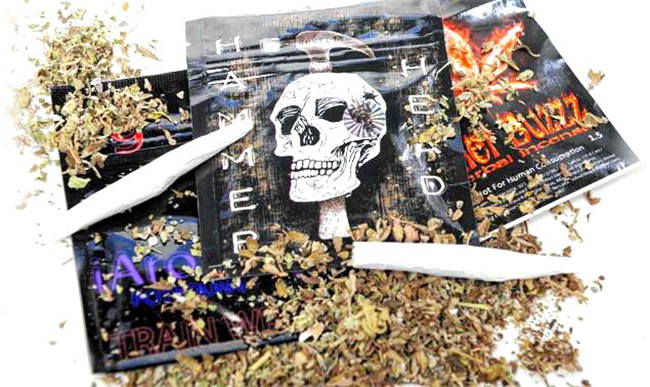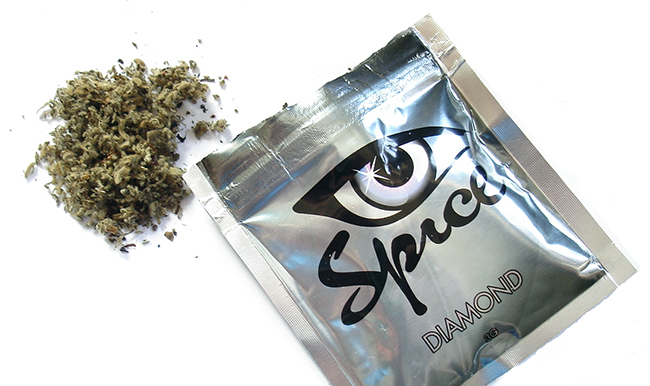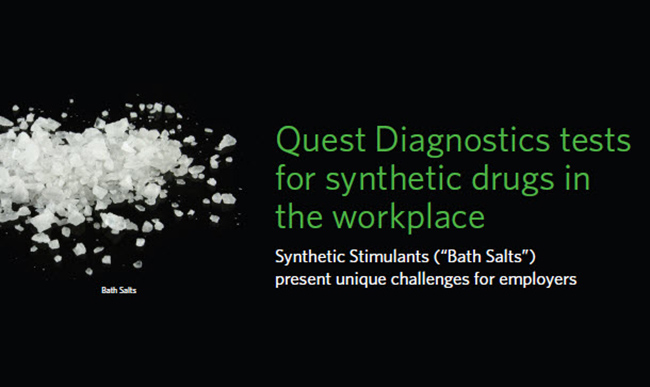 Responsible for a 40% increase in emergency room visits from 2010 to 2011, synthetic cannabinoids have reached a heightened level of notoriety. Some of the reported symptoms during these ER visits were severe vomiting, hallucinations and, in some cases, cardiac arrest.
Responsible for a 40% increase in emergency room visits from 2010 to 2011, synthetic cannabinoids have reached a heightened level of notoriety. Some of the reported symptoms during these ER visits were severe vomiting, hallucinations and, in some cases, cardiac arrest.
Banned in several countries since 2004, synthetic cannabinoids (also commonly known as K2, spice or synthetic marijuana) mimic the effects of THC – the psychoactive ingredient found in marijuana. Suppliers of these designer drugs package dried plant materials sprayed with a mixture of compounds and use slick names and packaging to attract their would-be customers through the allure of mainstream retail outlets. According to the Drug & Alcohol Testing Industry Association (DATIA), synthetic cannabinoids are considered by many as a “legal high” and a safe way to experience mind altering effects. Not only are these assumptions misguided, they are dangerous.
DATIA reported that effective January 30, 2015 the Administrator of the Drug Enforcement Administration (DEA) issued its final order to temporarily add three more synthetic cannabinoids as schedule I banned substances. The Schedule I category includes the most dangerous drugs, substances, or chemicals with no currently accepted medical use and a high potential for abuse.
- N-(1-amino-3-methyl-1- oxobutan-2-yl)-1-(cyclohexylmethyl)- 1H-indazole-3-carboxamide (‘‘AB– CHMINACA’’)
- N-(1-amino-3-methyl- 1-oxobutan-2-yl)-1-pentyl-1H-indazole- 3-carboxamide (‘‘AB–PINACA’’)
- [1-(5-fluoropentyl)-1H-indazol-3- yl](naphthalen-1-yl)methanone (‘‘THJ–2201’’)
To learn more about drug testing, visit our website.
 Your Privacy Choices
|
Privacy Notices
|
Terms
|
Language Assistance / Non-Discrimination Notice | Asistencia de Idiomas / Aviso de no Discriminación | 語言協助 / 不䈚視通知
Your Privacy Choices
|
Privacy Notices
|
Terms
|
Language Assistance / Non-Discrimination Notice | Asistencia de Idiomas / Aviso de no Discriminación | 語言協助 / 不䈚視通知


















Banned in several countries since 2004, synthetic cannabinoids (also commonly known as K2, spice or synthetic marijuana) mimic the effects of THC – the psychoactive ingredient found in marijuana. Suppliers of these designer drugs package dried plant materials sprayed with a mixture of compounds and use slick names and packaging to attract their would-be customers through the allure of mainstream retail outlets. According to the Drug & Alcohol Testing Industry Association (DATIA), synthetic cannabinoids are considered by many as a “legal high” and a safe way to experience mind altering effects. Not only are these assumptions misguided, they are dangerous.
DATIA reported that effective January 30, 2015 the Administrator of the Drug Enforcement Administration (DEA) issued its final order to temporarily add three more synthetic cannabinoids as schedule I banned substances. The Schedule I category includes the most dangerous drugs, substances, or chemicals with no currently accepted medical use and a high potential for abuse.
To learn more about drug testing, visit our website.